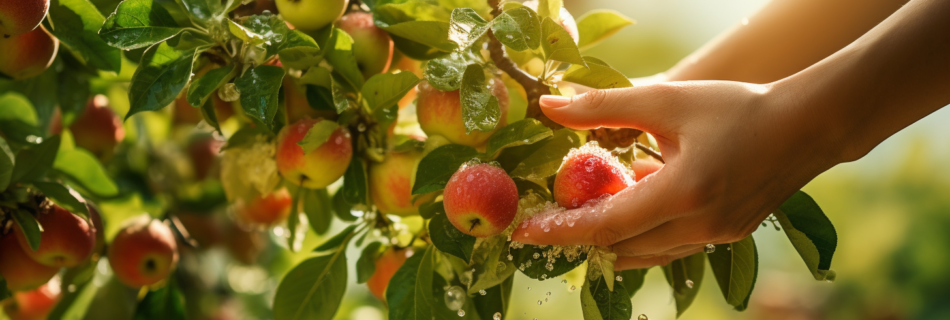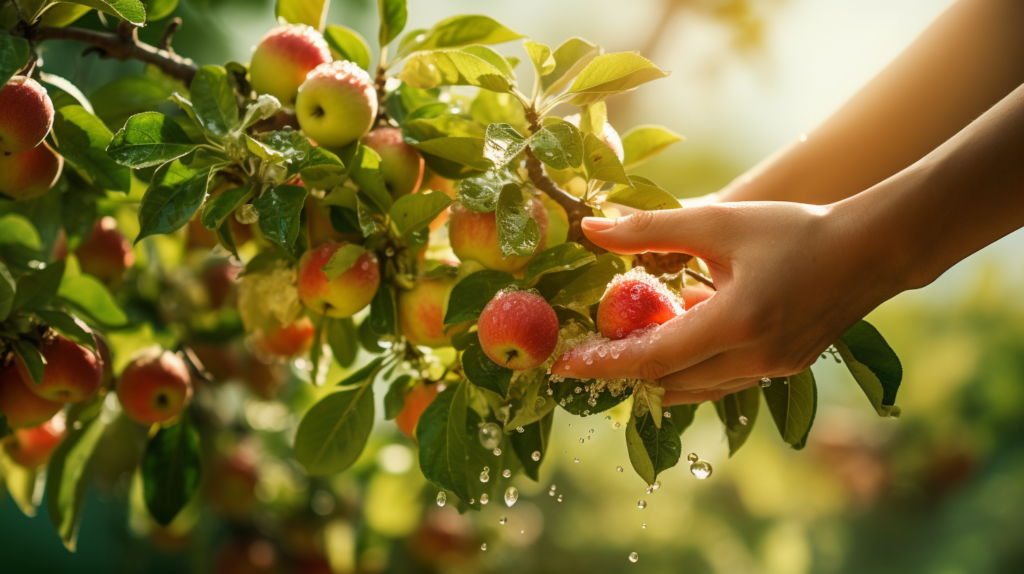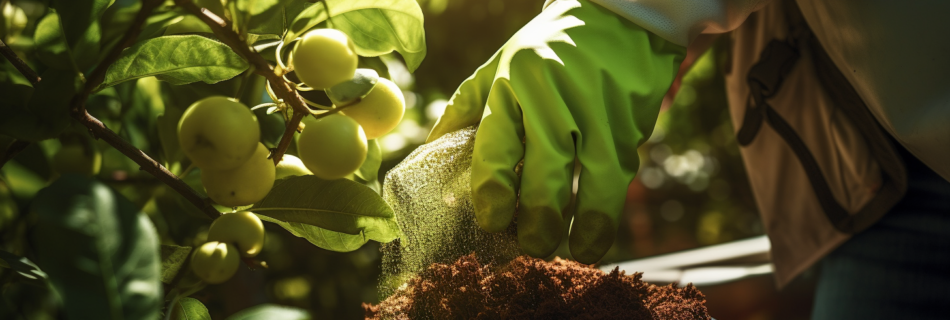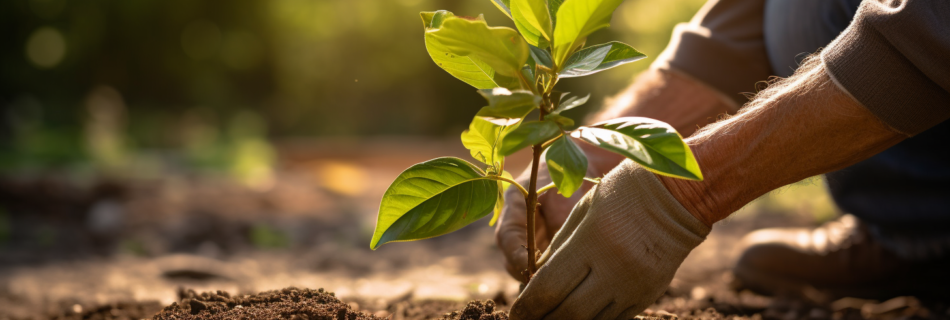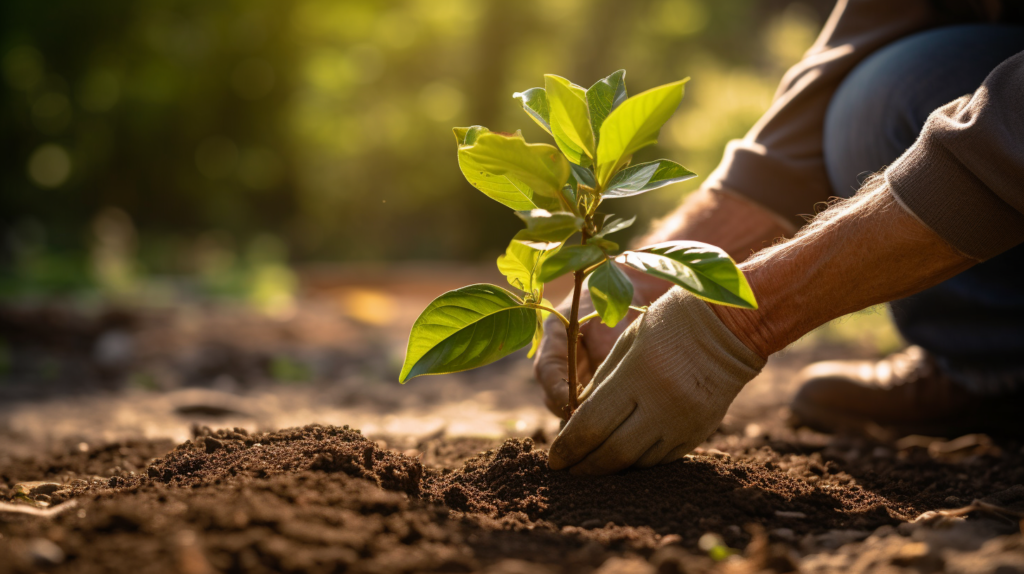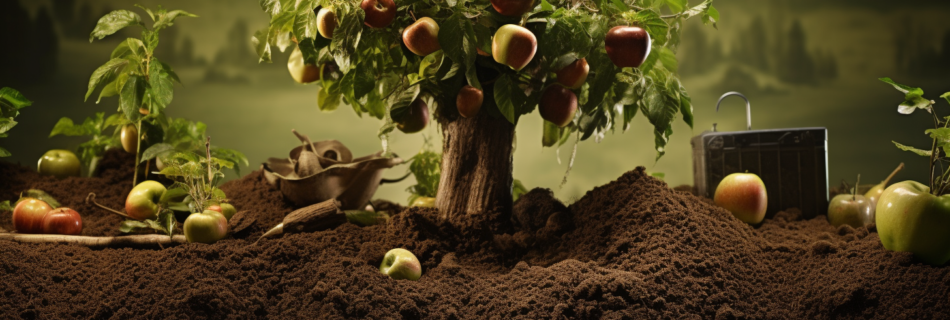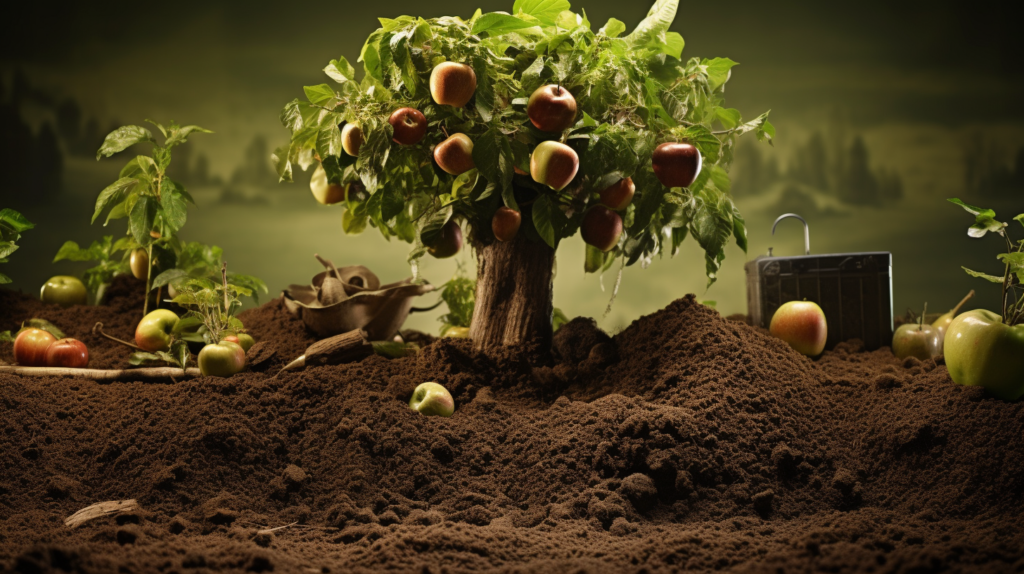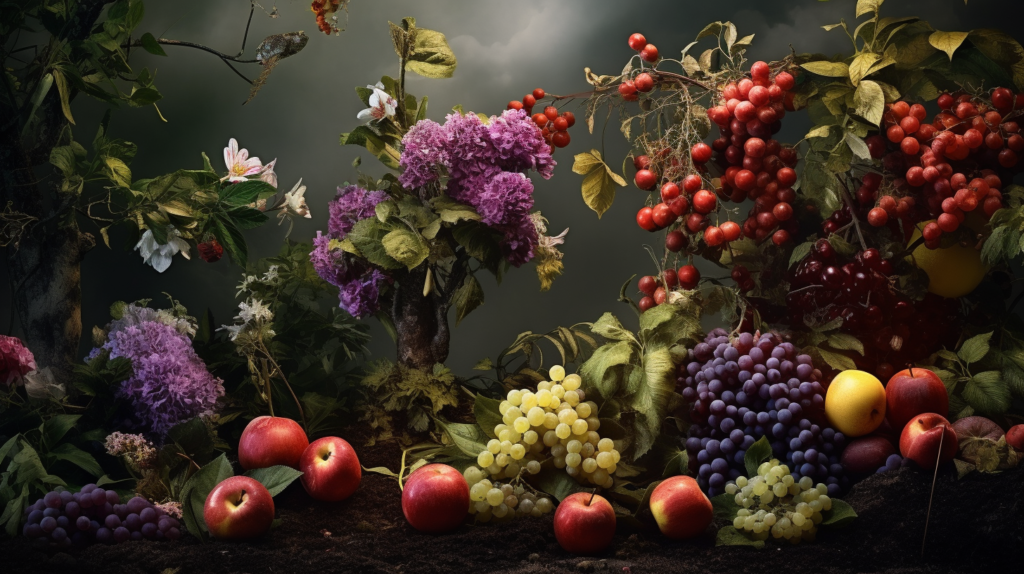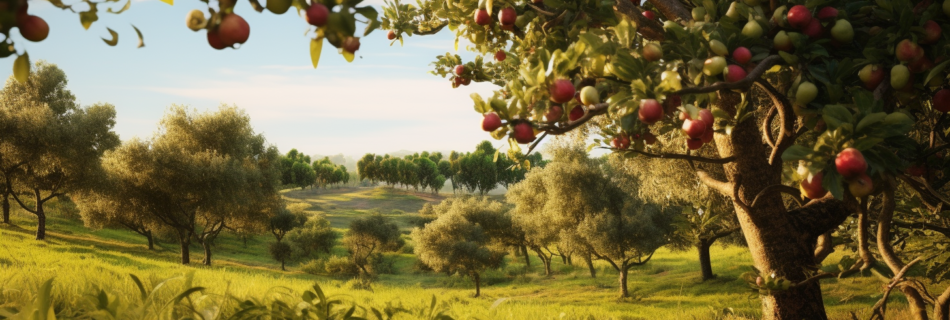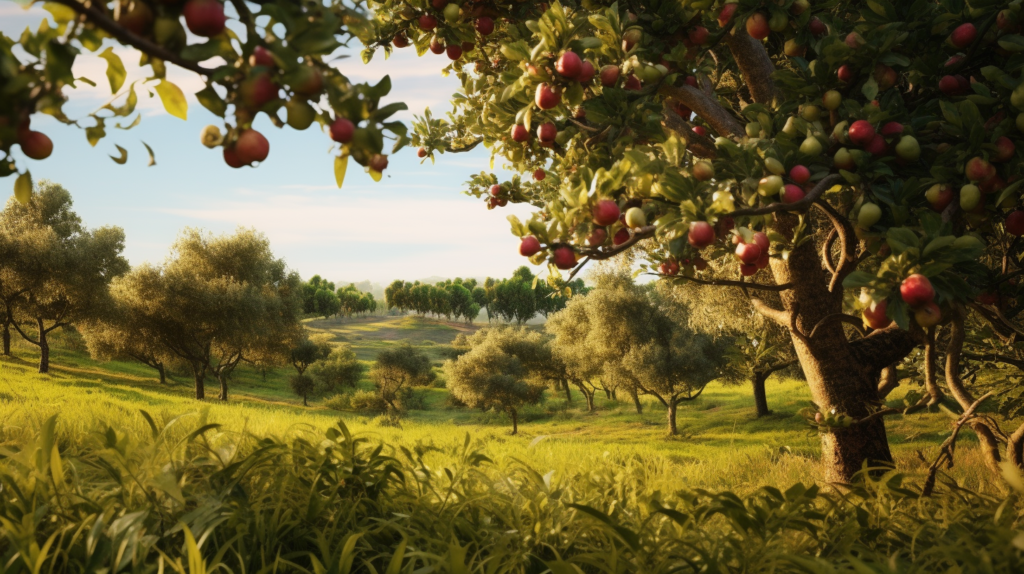Are you tired of dealing with unsightly grass in your gravel driveway? Want a permanent solution to keep your driveway weed-free? Look no further!
We’ll guide you through three effective methods to permanently kill grass in your gravel driveway. Whether you prefer herbicides, manual removal, or physical barriers, we have you covered.
Say goodbye to constant battles with grass and enjoy a beautiful, low-maintenance driveway. Let’s get started!
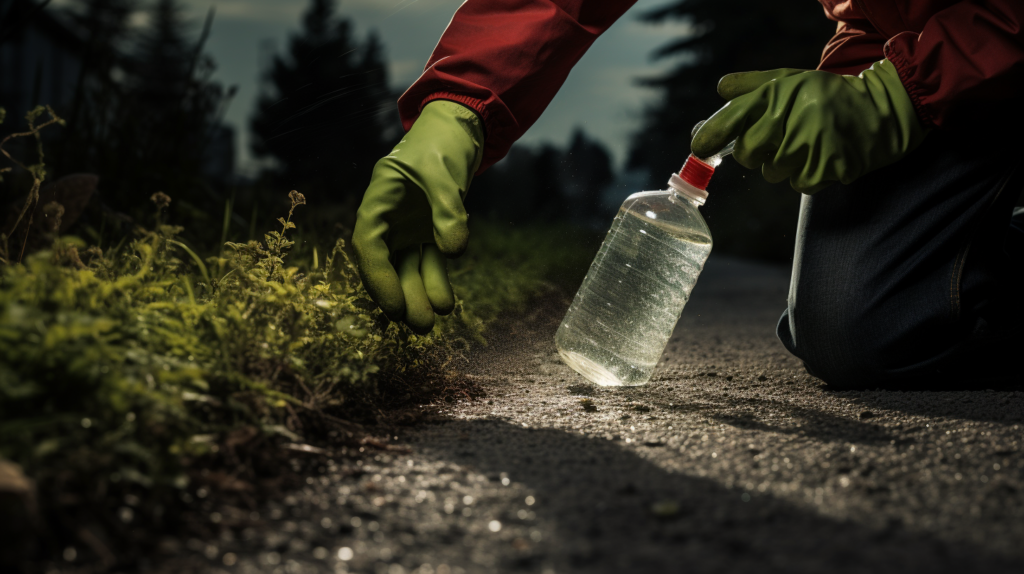
How to Permanently Kill Grass in Gravel Driveway (3 Effective Methods)
To permanently kill grass in your gravel driveway, you have three effective methods at your disposal.
First, you can use herbicides, such as glyphosate, to kill the grass without harming the gravel.
Second, manual removal of grass by hand or with tools like a hoe or trowel can be effective, although it requires more labor.
Use Herbicides
To effectively kill grass in a gravel driveway, you can use herbicides. One effective option is to apply a glyphosate herbicide evenly across the entire surface of the driveway. Glyphosate herbicides effectively kill grass without harming the gravel. It’s recommended to reapply the herbicide every few weeks or months, depending on the product and rainfall.
Be sure to read and follow all directions carefully to avoid damaging the concrete or asphalt. There are many products available on the market that can quickly and effectively kill grass in a gravel driveway. Using herbicides is a convenient and efficient method to permanently get rid of grass in your driveway.
Manually Removing Grass
Continuing the discussion on how to permanently kill grass in a gravel driveway, one effective method is manually removing the grass. Regularly pull up weeds or grass by hand or with a tool like a hoe or trowel. Ensure to remove as much of the root system as possible to prevent regrowth.
Although this method is more labor-intensive, it can help control new growth. Consider adding fresh gravel after removing the weeds to fill any holes. Manual removal is effective for small patches of grass in a gravel driveway.
It’s important to stay vigilant and regularly monitor the area for any new growth. By manually removing the grass, you can maintain a weed-free gravel driveway without the use of chemicals or herbicides.
Covering the Area with A Tarp
Cover the area with a tarp to effectively kill grass in a gravel driveway. This method is a non-chemical approach that prevents sunlight from reaching the grass, ultimately leading to its demise. Secure the edges of the tarp to prevent it from blowing away during windy weather.
Lack of sunlight will eventually kill any vegetation trying to grow, including grass. For better effectiveness, use a tarp during periods of hot weather when the sun’s rays are stronger.
Another option is to lay landscape fabric on the gravel, creating a barrier between the soil and stones. Ensure good drainage to prevent water pooling on the gravel, as grass seeds need sunlight and water to germinate. Keeping the gravel dry discourages growth.
If needed, consult with a professional to improve drainage or install drains.
Tips to Permanently Kill Grass in A Gravel Driveway
For effectively killing grass in your gravel driveway, consider implementing these tips.
First, using herbicides and chemicals can be an effective method. Apply a glyphosate herbicide evenly across the entire surface of the driveway, following all directions carefully to avoid damaging the concrete or asphalt. Reapply the herbicide every few weeks or months as needed. Glyphosate herbicides are known to kill grass without harming the gravel. There are many products available on the market that can quickly and effectively eliminate grass in your gravel driveway.
Another option is manual removal. Regularly pull up weeds or grass by hand or with tools like a hoe or trowel, making sure to remove as much of the root system as possible to prevent regrowth. This method may be more labor-intensive, but it can help control new growth. Consider adding fresh gravel after removing the weeds to fill any holes.
Non-chemical methods can be used. Covering the area with a tarp or heavy material can block sunlight and prevent growth. Ensure the edges of the tarp are secured to prevent it from blowing away. Lack of sunlight will eventually kill any vegetation trying to grow. Another option is laying landscape fabric to create a barrier between the soil and stones, ensuring good drainage to prevent water pooling on the gravel. Keeping the gravel dry discourages grass growth. If needed, consult with a professional for improving drainage or installing drains.
How to Permanently Get Rid of Weeds in Gravel Driveway Naturally
To permanently get rid of weeds in your gravel driveway naturally, you can implement a few simple methods. Here are two effective ways to achieve a weed-free driveway without the use of chemicals:
- Manual Removal:
- Regularly pull up weeds or grass by hand or with a tool like a hoe or trowel.
- Ensure to remove as much of the root system as possible to prevent regrowth.
- This method is more labor-intensive but can help control new growth.
- Consider adding fresh gravel after removing the weeds to fill any holes.
- Manual removal is effective for small patches of grass in a gravel driveway.
- Non-Chemical Methods:
- Cover the area with a tarp or heavy material to block sunlight and prevent growth.
- Secure the edges of the tarp to prevent it from blowing away in windy weather.
- Lack of sunlight will eventually kill any vegetation trying to grow.
- Use a tarp during periods of hot weather for better effectiveness.
- Lay landscape fabric to create a barrier between soil and stones.
- Ensure good drainage to prevent water pooling on the gravel.
- Grass seeds need sunlight and water to germinate, keeping gravel dry discourages growth.
- Consult with a professional for improving drainage or installing drains.
How Do You Kill Grass to Lay Gravel
To effectively kill grass and prepare the area for laying gravel, you can use a combination of manual removal and non-chemical methods.
For manual removal, regularly pull up weeds or grass by hand or with a tool like a hoe or trowel. Be sure to remove as much of the root system as possible to prevent regrowth. This method is more labor-intensive but can help control new growth. Consider adding fresh gravel after removing the weeds to fill any holes.
Non-chemical methods can also be effective. Cover the area with a tarp or heavy material to block sunlight and prevent growth. Secure the edges of the tarp to prevent it from blowing away in windy weather. Lack of sunlight will eventually kill any vegetation trying to grow. Use a tarp during periods of hot weather for better effectiveness.
Another option is to lay landscape fabric to create a barrier between the soil and stones. Ensure good drainage to prevent water pooling on the gravel, as grass seeds need sunlight and water to germinate. Keeping the gravel dry discourages growth. If needed, consult with a professional for improving drainage or installing drains.
Safety Tips While Removing Grass Permanently
When permanently removing grass from your gravel driveway, it’s important to prioritize safety throughout the process. Here are some safety tips to consider:
- Personal Protective Equipment (PPE):
- Wear gloves to protect your hands from sharp objects and potential chemical exposure.
- Use safety goggles to shield your eyes from debris or splashes when using herbicides or chemicals.
- Wear long sleeves and pants to protect your skin from contact with herbicides and sharp objects.
- Proper Handling of Herbicides and Chemicals:
- Read and follow all instructions and safety precautions provided by the manufacturer.
- Store herbicides and chemicals in a secure place away from children and pets.
- Avoid inhaling or ingesting the herbicides or chemicals and wash hands thoroughly after use.
- Safe Manual Removal:
- Use appropriate tools such as a hoe or trowel to remove grass manually.
- Be cautious of your body posture and avoid overexertion to prevent strain or injury.
- Dispose of removed grass and weeds properly to avoid recontamination.
Is a Weed Barrier Works to Permanently Get Rid of Weeds in A Gravel Driveway
A weed barrier effectively prevents weed growth in a gravel driveway. It acts as a physical barrier that blocks sunlight and prevents weed seeds from germinating and taking root in the gravel. A weed barrier is typically made of a durable material like landscape fabric or geotextile. It’s installed directly under the layer of gravel, providing an extra layer of protection against weed growth.
To install a weed barrier, first, remove any existing weeds or grass from the driveway. Then, lay the barrier over the entire surface, ensuring that it covers every inch of the gravel. Secure the edges of the barrier with landscape staples or pins to keep it in place.
A weed barrier is an effective long-term solution for preventing weed growth in a gravel driveway. However, it’s important to note that it may not completely eliminate all weeds. Some determined weeds may find a way to penetrate the barrier over time. In such cases, regular maintenance and spot treatments may be necessary to keep your driveway weed-free.
How Do You Kill Grass and Cover with Gravel
If you want to permanently kill grass and cover it with gravel, you can achieve this by following these steps:
- Kill the Grass:
- Use Herbicides: Apply a glyphosate herbicide evenly across the entire surface of the driveway. Make sure to follow the instructions carefully to avoid damaging the gravel or any surrounding structures. Reapply the herbicide as needed.
- Manual Removal: Regularly pull up weeds or grass by hand or with a tool like a hoe or trowel. Be sure to remove as much of the root system as possible to prevent regrowth. This method is more labor-intensive but can be effective for small patches of grass.
- Non-Chemical Methods: Cover the area with a tarp or heavy material to block sunlight and prevent growth. Alternatively, lay landscape fabric to create a barrier between the soil and stones. Ensure good drainage to discourage grass growth.
- Cover with Gravel:
- Prepare the Surface: Remove any remaining grass, weeds, or debris from the area. Level the surface if necessary.
- Choose the Right Gravel: Select a type of gravel that’s suitable for your driveway. Ensure it’s the right size and shape for stability and proper drainage.
- Spread the Gravel: Evenly distribute the gravel across the entire driveway. Use a rake or shovel to spread it out and create an even surface.
- Compact the Gravel: Use a compactor or tamper to compact the gravel and ensure a firm and stable surface.
Soil Sterilant for Gravel Driveway
To effectively kill grass in a gravel driveway, consider using a soil sterilant. Soil sterilants are effective in killing existing vegetation and preventing new seeds from germinating. There are different types of soil sterilants available, so choose one that’s suitable for the weeds in your driveway.
Mix the sterilant with water and spray it evenly on the gravel driveway. Results can be seen within a week or two, and regular treatment will help keep the driveway weed-free.
Soil sterilants work by inhibiting the growth of plants and disrupting their metabolic processes. They’re designed to target and kill unwanted vegetation while leaving the gravel unharmed. Using a soil sterilant is a convenient and long-lasting solution for eliminating grass and weeds in your gravel driveway.
It is important to follow the instructions provided by the manufacturer when using a soil sterilant. Make sure to wear protective clothing and gloves, and avoid spraying on windy days to prevent the sterilant from drifting onto desirable plants. It’s advisable to test the sterilant on a small area of the driveway first to ensure compatibility and effectiveness.
Using a soil sterilant can be an efficient method for permanently killing grass in a gravel driveway, providing a clean and weed-free surface.
How to Stop Grass from Growing in Gravel
To prevent grass from growing in your gravel, there are two main methods you can use: the herbicide method and the non-chemical method.
- Herbicide Method:
- Apply a glyphosate herbicide evenly across the entire surface of the driveway.
- Read and follow all directions carefully to avoid damaging concrete or asphalt.
- Reapply the herbicide every few weeks or months depending on the product and rainfall.
- Glyphosate herbicides effectively kill grass without harming the gravel.
- Many products on the market can quickly and effectively kill grass in a gravel driveway.
- Use soil sterilant to kill existing vegetation and prevent new seeds from germinating.
- Different types of soil sterilants are available, choose one suitable for the weeds in your driveway.
- Mix the sterilant with water and spray it evenly on the gravel driveway.
- Results can be seen within a week or two, regular treatment keeps the driveway weed-free.
- Non-Chemical Method:
- Cover the area with a tarp or heavy material to block sunlight and prevent growth.
- Secure the edges of the tarp to prevent it from blowing away in windy weather.
- Lack of sunlight will eventually kill any vegetation trying to grow.
- Use a tarp during periods of hot weather for better effectiveness.
- Lay landscape fabric to create a barrier between soil and stones.
- Ensure good drainage to prevent water pooling on the gravel.
- Grass seeds need sunlight and water to germinate, keeping gravel dry discourages growth.
- Consult with a professional for improving drainage or installing drains.
Frequently Asked Questions
Can I Use a Weed Barrier to Permanently Get Rid of Weeds in My Gravel Driveway?
Yes, you can use a weed barrier to permanently get rid of weeds in your gravel driveway. Lay landscape fabric to create a barrier between the soil and stones, ensuring good drainage to discourage weed growth.
How Do I Stop Grass From Growing in My Gravel Driveway?
To prevent grass from growing in your gravel driveway, you can use herbicides like glyphosate, manually remove the grass, or use non-chemical methods like covering the area with a tarp or laying landscape fabric.
Is It Safe to Use Soil Sterilant on a Gravel Driveway?
Yes, it is safe to use a soil sterilant on a gravel driveway. Choose a suitable sterilant for the weeds in your driveway, mix it with water, and spray it evenly. Regular treatment keeps the driveway weed-free.
How Do I Kill Grass and Cover It With Gravel?
To kill grass and cover it with gravel, first remove any existing grass manually by pulling it up. Then, you can use herbicides or chemicals to permanently kill the grass. Another option is to use non-chemical methods like covering the area with a tarp or laying landscape fabric.
What Safety Precautions Should I Take When Removing Grass Permanently From My Gravel Driveway?
When removing grass permanently from your gravel driveway, take safety precautions. Use herbicides evenly, following directions to avoid concrete or asphalt damage. Pull up weeds manually, removing roots. Cover with tarp to block sunlight.
Conclusion
Utilizing herbicides, manual removal, and physical barriers, you can permanently kill grass in your gravel driveway.
Whether you prefer chemical or non-chemical methods, these three effective techniques will help you maintain a weed-free and low-maintenance driveway.
Say goodbye to unsightly grass growth and enjoy the beauty of a pristine gravel driveway.





